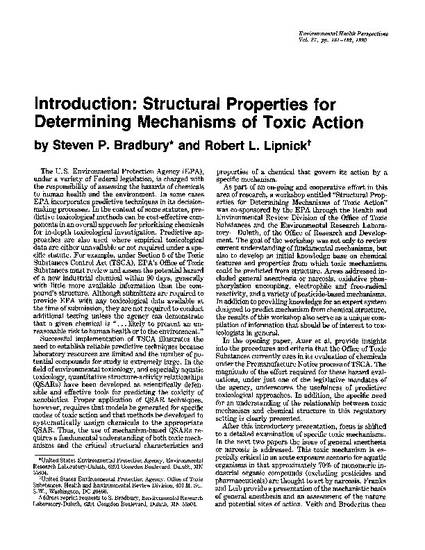
The U.S. Environmental Protection Agency (EPA), under a variety of Federal legislation, is charged with the responsibility of assessing the hazards of chemicals to human health and the environment. In some cases EPA incorporates predictive techniques in its decisionmaking processes. In the context of some statutes, predictive toxicological methods can be cost-effective components in an overall approach for prioritizing chemicals for in-depth toxicological investigation. Predictive approaches are also used where empirical toxicological data are either unavailable or not required under a specific statute. For example, under Section 5 of the Toxic Substances Control Act (TSCA), EPA's Office of Toxic Substances must review and assess the potential hazard of a new industrial chemical within 90 days, generally with little more available information than the compound's structure. Although submitters are required to provide EPA with any toxicological data available at the time of submission, they are not required to conduct additional testing unless the agency can demonstrate that a given chemical is ". . . likely to present an unreasonable risk to human health or to the environment. "
- predictive techniques,
- potential hazard,
- toxic mechanisms,
- aquatic toxicology,
- quantitative structure-activity relationships (QSARs)
Available at: http://works.bepress.com/steven_bradbury/36/
